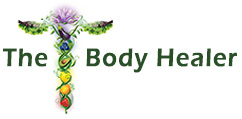Bones - Nature's Toothbrush
 Always include raw bones in your dog's diet. It is the single best way to clean their teeth, and without them, it's very difficult to keep their teeth healthy. Chewing on raw bones will also significantly reduce the need for professional teeth cleaning.
Always include raw bones in your dog's diet. It is the single best way to clean their teeth, and without them, it's very difficult to keep their teeth healthy. Chewing on raw bones will also significantly reduce the need for professional teeth cleaning.
In the wild, a canine chews on the bones after eating the flesh from prey as a natural way of removing food particles from their teeth. The cartilage, ligaments, and tendons act as natural dental floss. The bones also contain calcium, magnesium, phosphorus, and various trace minerals that are an essential part of their diet.
Learn more about pet dental care...
Always feed bones raw. Cooked bones are more brittle and have a much higher likelihood of splintering and causing internal injury to your dog, perforating their intestines.
Types of Bones
There are three types of raw bones:
-
The edible kind
Edible bones are crushed and mixed in with their food. They are softer and more pliable, such as chicken and turkey necks. Raw pet food manufacturers crush them in a meat grinder and mixed them into food. These manufacturers also provide a variety of raw bones (such as Primal Raw Chicken Necks) which can be a great supplement to your pet's diet. -
Larger recreational bones
These are bones your pup loves to spend hours chewing on. Whole, raw bones fed on a regular basis (e.g. weekly) are a fantastic way to keep your pup's teeth sparkly clean. The best types are beef or bison femurs, or hip bones filled with marrow. They can be found in the freezer section of pet food stores, or in the meat section of supermarkets and natural grocery stores. If you don't see any, ask at the meat counter. Sometimes, bones are stored in the back specifically for pet owners who purchase them for their pets, or for soup bones, and they are sold at a very reasonable price. -
Knuckle bones
These are bones that are rounder and look like large knuckles. Knuckle bones, especially buffalo knuckles, can be pretty soft and spongy inside and are full of MSM and glucosamine. These bones can also be found in the freezer section of many pet food stores.
Safety Guidelines for Feeding Bones
Aim to feed a good-sized bone once or twice a week. When feeding your pet raw bones, follow these important safety guidelines:
- Always supervise your pup when eating recreational bones so that you can quickly react to any problems such as choking, especially the first few times you feed bones.
- Make sure that the bone is not small enough to be swallowed whole, and that when any bone has been gnawed down to a size where it can be swallowed, throw it out.
- Never feed very small bones (especially the small, sharp ones found within chickens) directly to your pup.
- When your pup first begins chewing on bones, their gums may bleed a little which is natural. If you notice excessive bleeding, remove the bone and try again in a day or two as the gums heal and strengthen.
- Bones should always be fed raw as cooked bones are more brittle, and more likely to splinter and cause internal damage.
- Fresh, raw bones can be very messy and greasy. If indoors, make sure you protect your floors with a large blanket, or feed bones only in an area where flooring is easily cleaned. Better still, plan to sit outside with your pup on a patio or in the yard.
- Avoid rib bones, turkey necks, and pork bones that can splinter easily.
- Bones can be fed frozen or thawed. Many dogs love the feel of an ice-cold bone against their gums and teeth.
- If possible, buy bones that are either organic or from animals raised naturally without hormones and antibiotics. ...and here's why.
RELATED ARTICLES
- Why pets are getting sicker
- Healthy & balanced pet diet
- Tips on choosing a healthy pet food
- Home-cooked diet
- Raw food diet for pets
- Doing raw right for pets
- Home-baked doggy treats
- Bones - nature's toothbrush
- Bone broth recipe
- Pet food recalls
- Treating common pet injuries
- Pet-proofing your home
- Preparing for a new pet!
- Fleas, ticks, & mosquitoes
- Natural dog grooming
- Pet dental care
- Pet vaccinations
- Declawing



